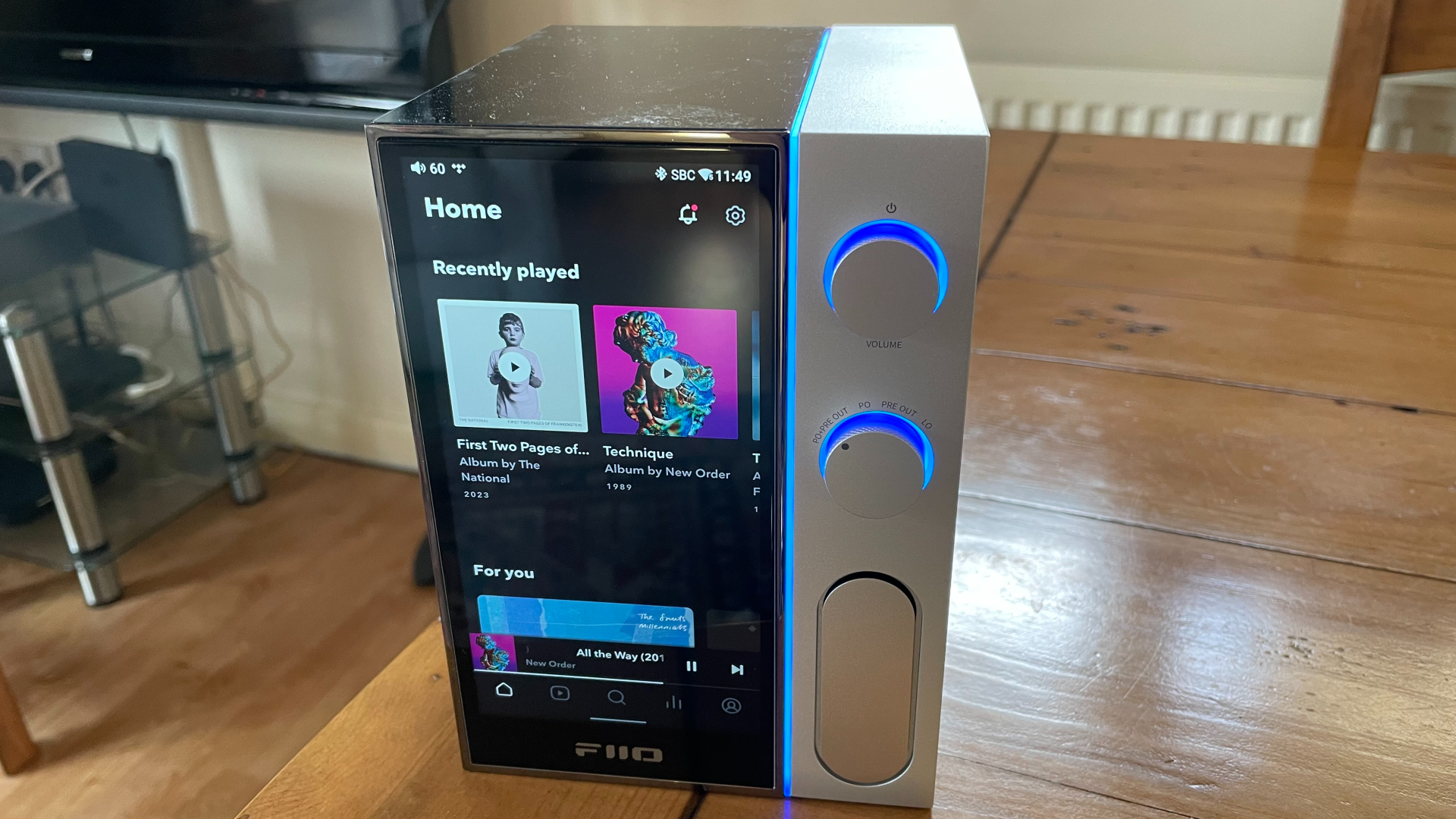
The FiiO R9 is a trailblazer; a singular and unique proposition. It's a Wi-Fi-enabled headphone amp with all of the connections you could want and all of the hi-res protocols and streaming services under its belt. It feels for all the world like an Android smartphone (devoid of annoying phone number) on the front of a high-end hub ready to accept practically any of the best headphones or active speaker you want to hook it up to – I logged into Google during setup and downloaded the Tidal and Qobuz apps from the Google Play store.
Yes, the FiiO R9 is basically twice the price of the R7 that went before it, and given FiiO's enviable run of form over the last few years, you'd be forgiven for thinking the Chinese audio specialist's likeable – and largely affordable – output was due a rare misstep. But that hasn't happened here. Simply put, the R9 is a triumph.
Where the R7 didn't have an HDMI ARC in (to receive audio from one of the best TVs or best 4K Blu-ray players, and from there to send it to a set of active speakers via the R9's dual RCA or XLR outs, for added hi-res audio in your content), the R9 does. Also, its larger six-inch Full HD touchscreen display easily beats the R7’s five-inch screen for both size and snappy speed of use – and although you may initially have to cradle it on your knees with said screen pointing up when using Android mode to log in to your streaming services (if that's the route you choose to go), once up and running it's a breeze to use.
The R9's eight-channel THX AAA-788+ onboard headphone amplifier and dual eight-channel ESS Sabre ES9038PRO DACs are a huge step up from the smaller R7's spec sheet – specifically, you're getting 7300mW of power, up from 3000mW. Essentially, the R9 is the finished article as a powerful amp for the best wired headphones, or a digital source to rival the best music players, and however I chose to use it during testing, it shone.
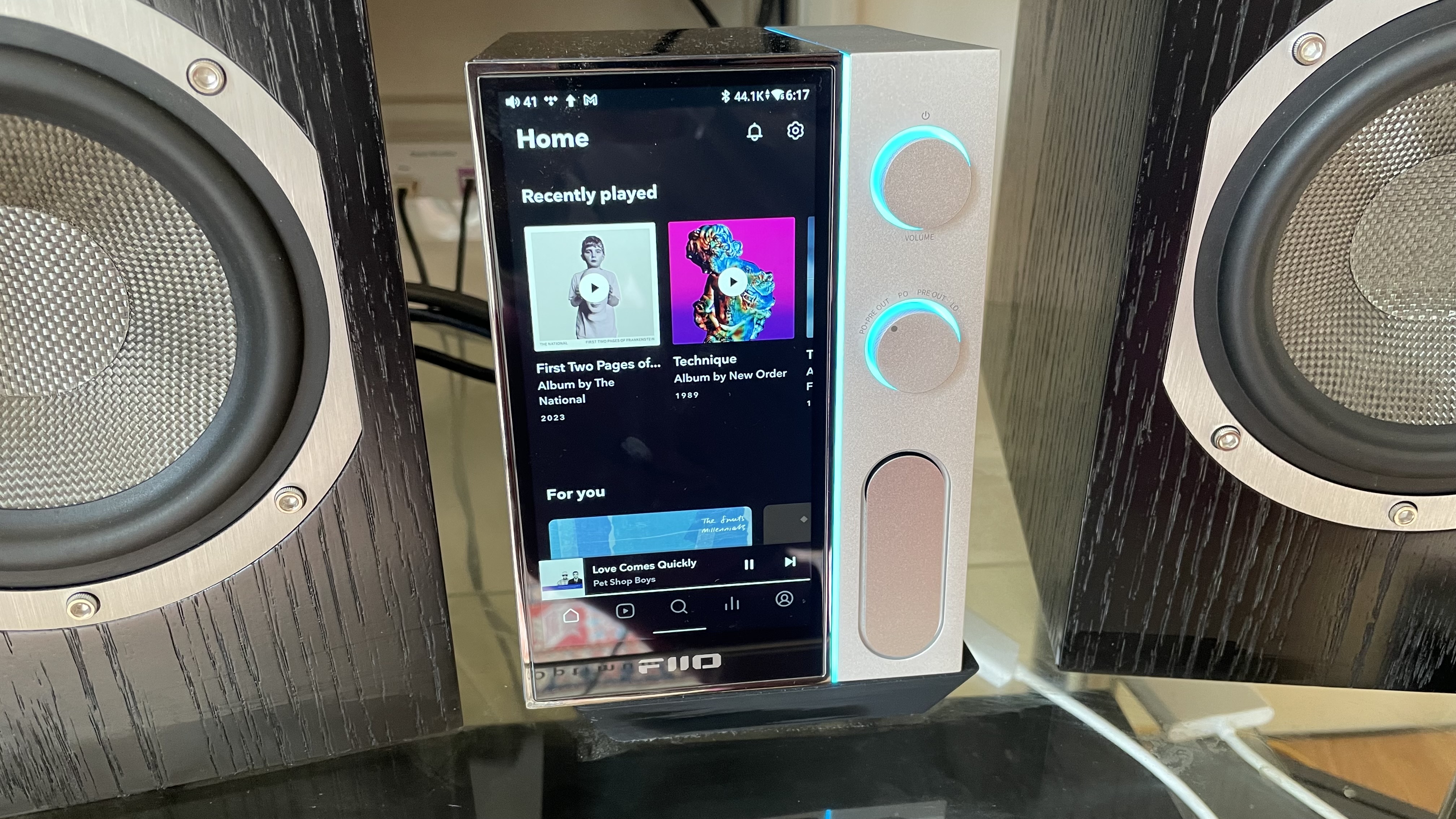
I used the R9's AirPlay Mode to feed it Apple Music Hi-Res Lossless files from my iPhone; I hooked it up to the Audio Pro C20 using just an RCA cable (although you do have to provide your own) and the line-in function; I paired a Marshall Middleton Bluetooth speaker to the R9 just because I had it to hand (thus freeing my phone up for other things and creating a standalone music hub with the R9 at it's beating heart); I plugged the excellent FiiO FT5 planar magnetic headphones into the 4.4mm port on the front of the R9 and listened to hi-res audio files from an SD card. Whatever I did, it calmly accepted the challenge and delivered zealous, crisp, detailed, dynamically agile and yet meaty music to my ears. Velvet Underground's There She Goes Again is beautifully layered and emotive, with backing vocals, rhythmic syncopated guitar chords and timing shifts expertly relayed as the track progresses.
Some will scratch their heads while viewing this thing of beauty, because you will need some other kit to get it singing. But hi-fi is all about compatible products and proper amplification. Audiophiles will find endless opportunity – have you ever seen a smartphone with a true hi-res DAC and headphone amp squirrelled away inside it, plus 6.35mm, 4.4mm and 4-pin XLR balanced headphone outs? Because that's just one way to use the R9.
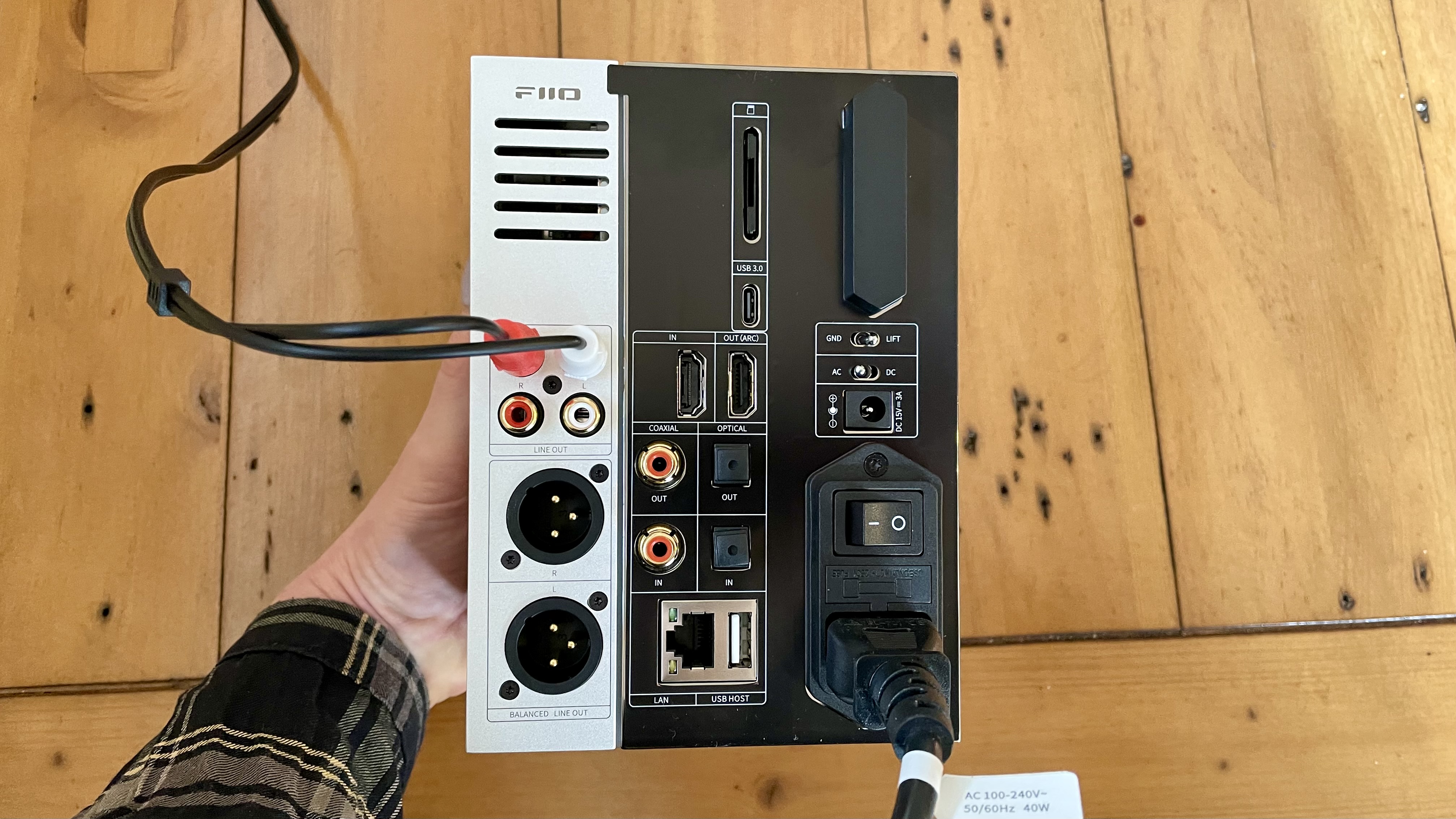
I feel duty bound to tell you what the FiiO R9 can't do, because the list of what it can handle is extensive: it won't play music on its own from the box, unlike the Naim Mu-so Qb or Sonus Faber Omnia for example. No, it needs you to supply at least one speaker driver (whether in your headphones or in a separate speaker box – or boxes) and it cannot be hooked up to a set of passive speakers. FiiO would doubtless point you towards its own SP3 active speakers as the ideal marriage, which are a similar size to the R9 and make for a svelte desktop setup – but as I've just explained, you don't have to have those. You could choose almost any active speaker from our best stereo speakers guide (or our best wireless speakers guide, for that matter) or any of the best Bluetooth speakers we recommend, although even with the best-quality Bluetooth codec support you could wish for (including LDAC) that does seem a shame given the plethora of hi-res friendly ports on the back of the R9.
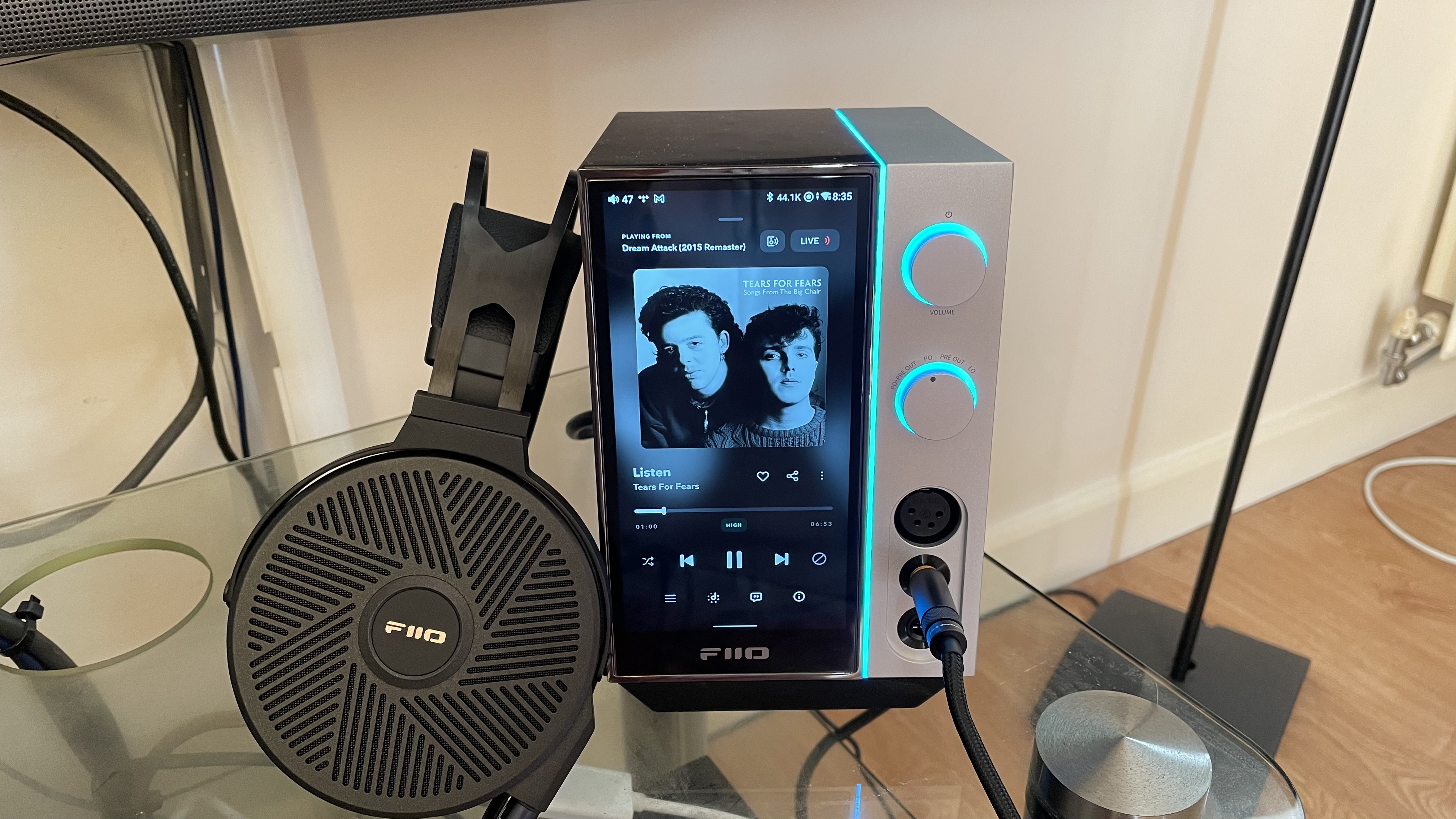
It shouldn't come as a huge surprise that FiiO's self-titled "flagship all-in-one digital media streamer" R9 is a big hit, just see my odes to the firm's BTR7 Bluetooth DAC, the Fiio M15S hi-res audio player, the Fiio M11S or even the novel FiiO KB3 audiophile keyboard. What you need to know is this: FiiO isn't messing around when it comes to connectivity and music quality here.
Okay, the shiny top plate (which carries on to the left side of the unit) gathers my fingerprint smudges a little, but FiiO has provided a cloth to help with that – and a Bluetooth remote so you won't touch it as much. Also, while you get two rubberized plinths to sit the R9 on (one of which angles it up nicely) it is occasionally difficult to tap your details in on the screen, because typically you cradle your smartphone in your palm and type with your thumbs, rather than stabbing at it with an index finger, as you have to here.
I strongly suggest you persevere though. The FiiO R9 is a great little music streaming solution and one I really do not want to have to give back (and I do have to return it, reader). It is relatively expensive for FiiO, yes. But just look at it – it's worth it.
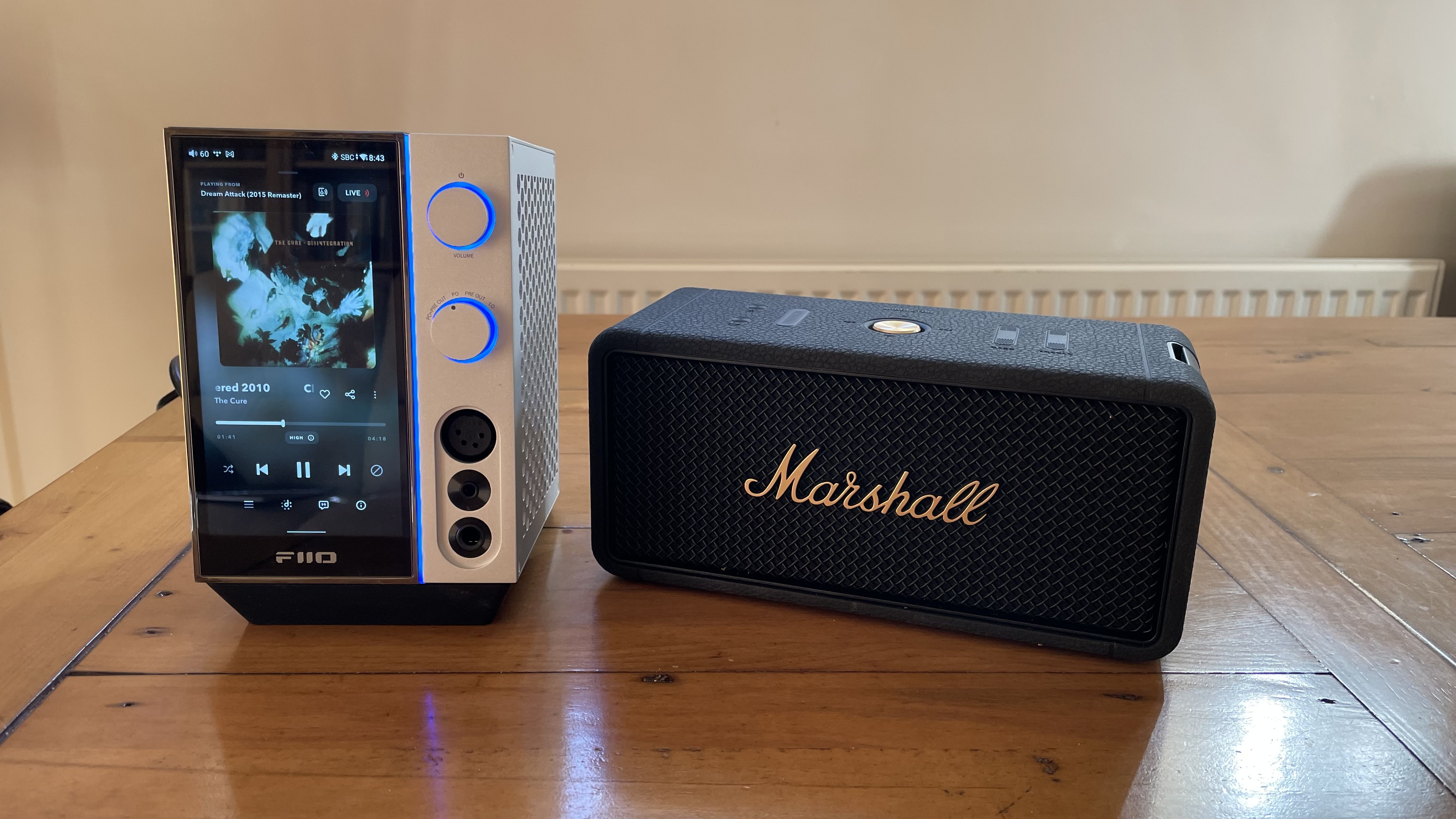
FiiO R9 review: Price & release date
- Officially priced $1,499 / £1,399 (so around AU$2,660)
- Launched January 2024
One of the reasons the R9 is such a refreshing product is that you almost certainly have the kit at home to get it up and singing (or get it bettering what you have) – and even if you just pair it to a Bluetooth speaker, it offers baked-in access to all of your streaming services and thus it completely frees your phone up from having to do the job.
That said, the Naim Mu-so Qb noted above, which does have speakers under the hood, can be found for around half the price of the FiiO proposition these days. Then again, the land-yacht styled Sonus Faber Omnia, which also sports a speaker array under the bonnet, is a more expensive $2,000 / £1,600 / AU$3,500. Ultimately, it depends what you're looking for.
Want power coupled with a small footprint and the option to plug any of the best wired headphones and audiophile-friendly cans in directly – as well as whichever active, wireless or Bluetooth speakers you prefer? The FiiO is unrivalled here.
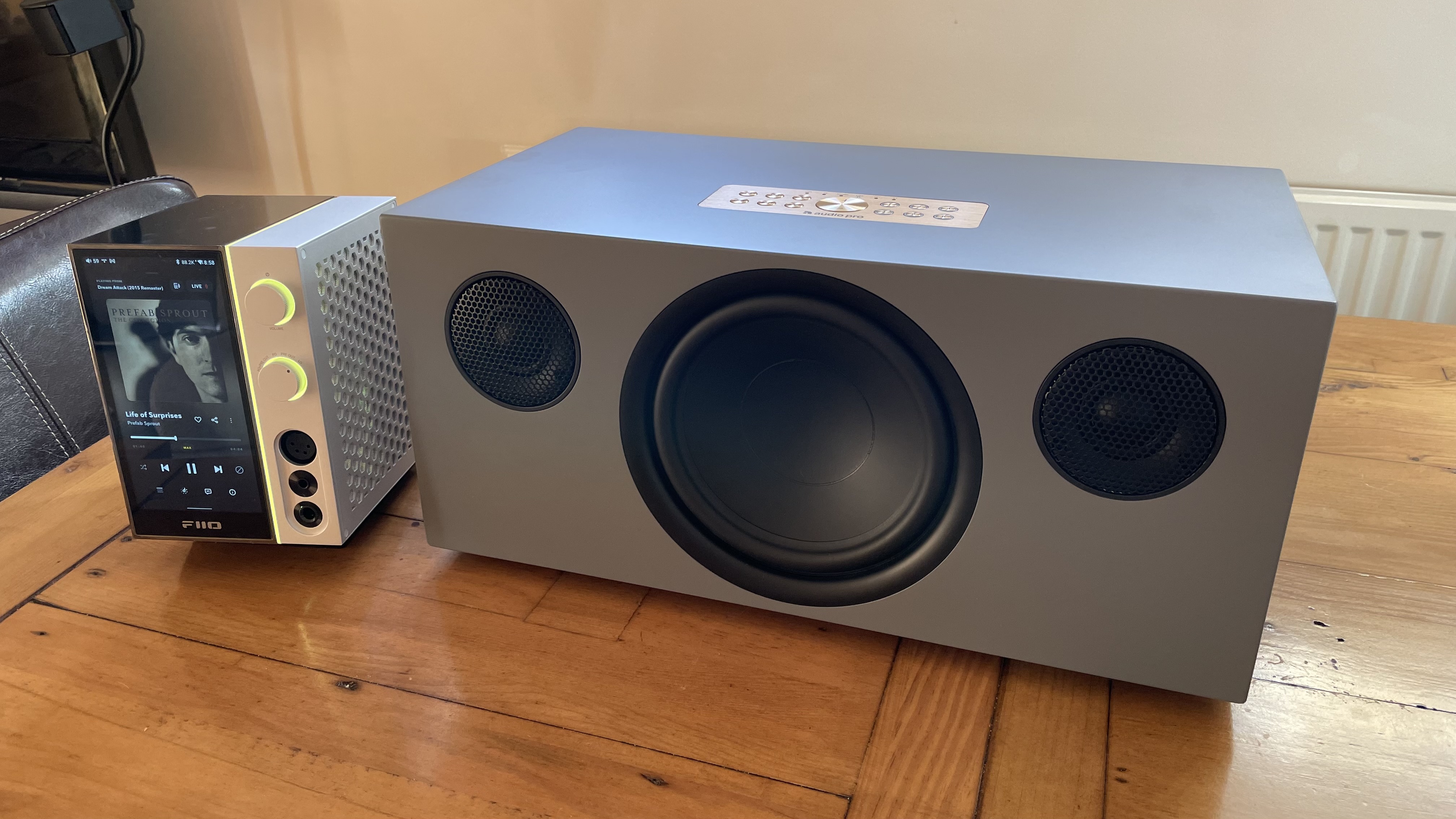
FiiO R9 review: Specs
Should you buy the FiiO R9?
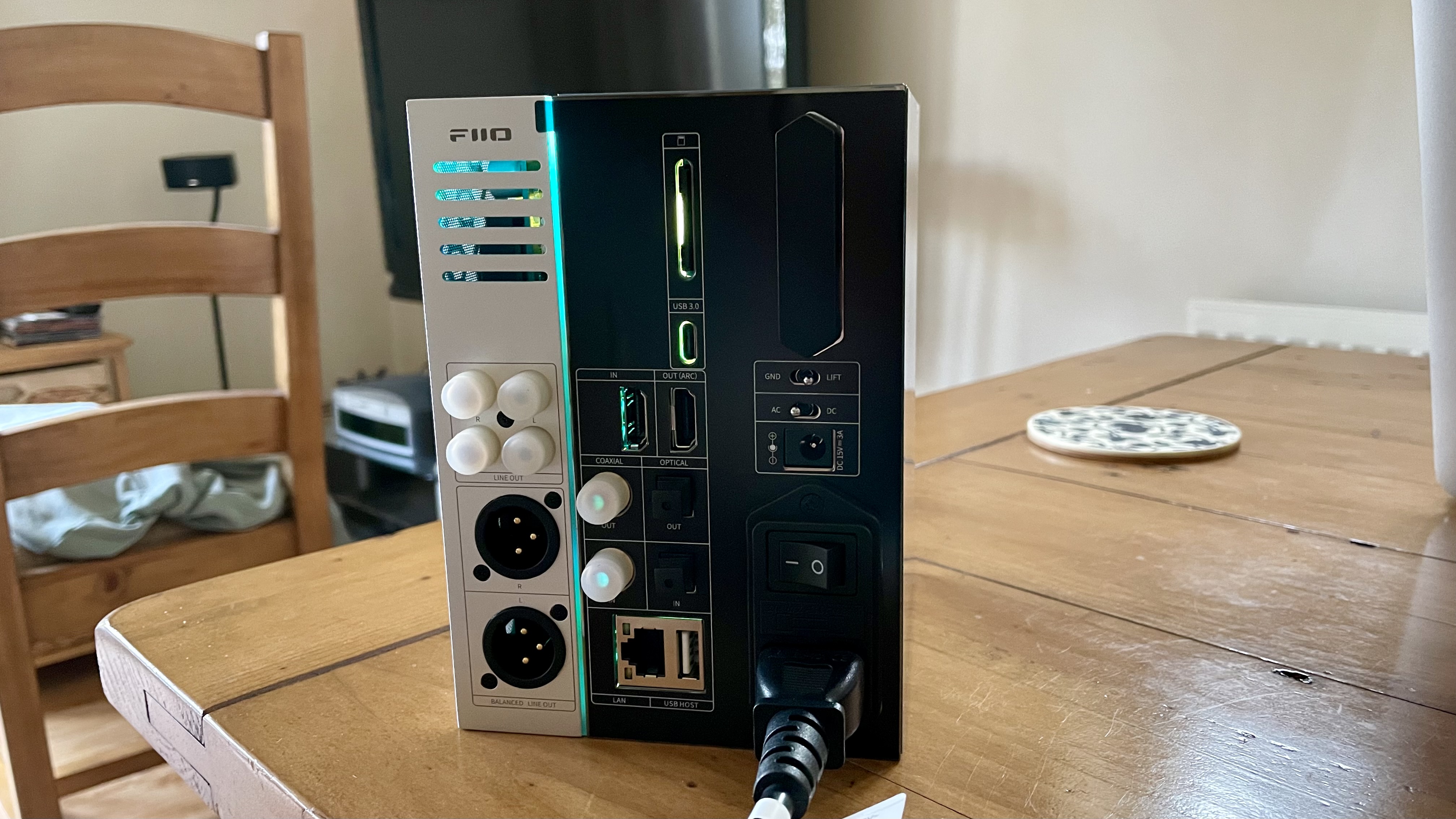
Buy it if...
Don't buy it if...
FiiO R9 review: Also consider
How I tested the FiiO R9
- Tested for five days, listened with several Bluetooth speakers, the Audio Pro C20, a set of active desktop speakers, and various wired headphones including the planar magnetic Audeze Euclid and planar magnetic open-back FiiO FT5
- Used at home
- Listened to Tidal Masters, Apple Music Lossless tracks using AirPlay from an iPhone 12 Pro, Qobuz and Spotify, stored music on an SD card
Following a thorough 24-hour run-in period, the FiiO R9 has been playing in my home for five days.
And I've thoroughly enjoyed it. It's impossible not to enjoy audio of such high quality – and with such malleability. To deep-dive into its plethora of connectivity options is to immerse yourself in new hi-res audio realms. I spent a day simply switching out headphones (both wired and wireless) and found new details and depths in even my heavy-rotation testing tracks.
When testing the audio quality across the frequencies, I listen to myriad playlists (spanning everything from acoustic remixes to heavy metal) on Apple Music, Qobuz and Tidal, podcasts and albums on Spotify, and TikTok videos on my MacBook Pro.
I’ve been testing audio products for five years. As a classical dancer, aerialist, and musical theater performer in another life, sound quality and user experience have always taken priority for me.
- First reviewed February 2024
- Read more about how we test







